What would your perfect place for practicing yoga look like? Some yoga enthusiasts would prefer a space mimicking the world of nature, others – the one that reflects the never-ending cycle of life. But most probably everyone would agree on a place creating a sense of safety and calmness. We have selected several aspirational yoga studios that would help open your chakras.
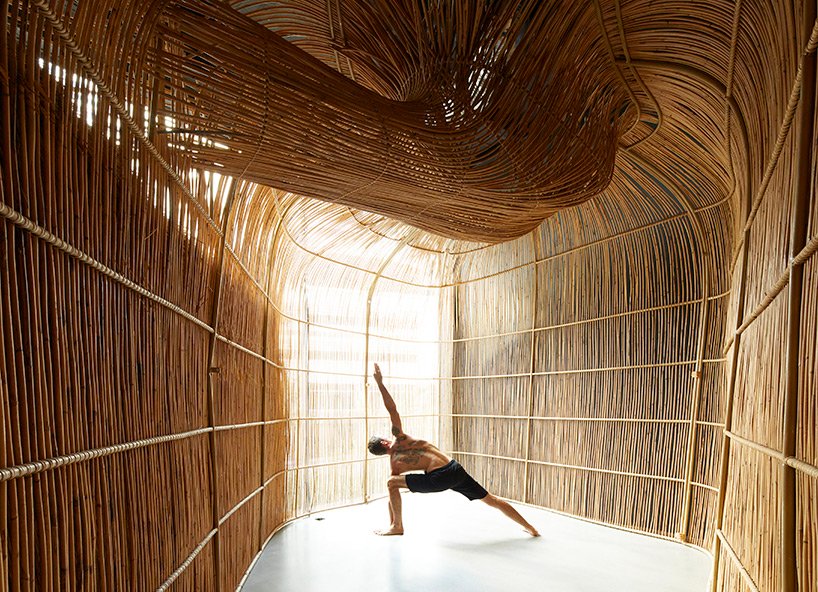
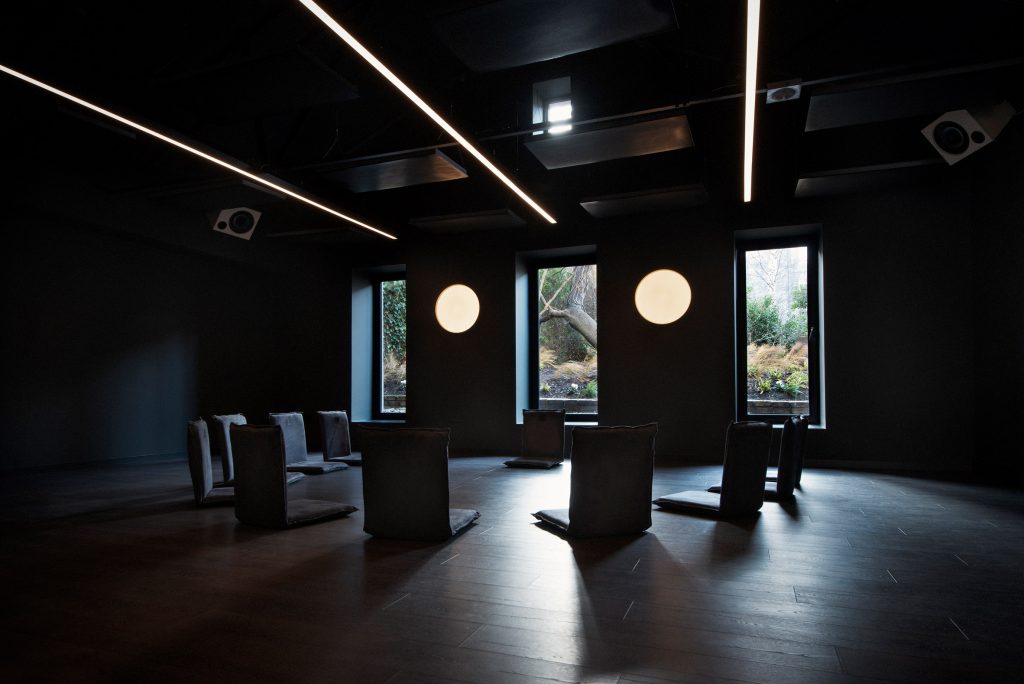
The Space Between yoga studio by Jordan Ralph DesignLocated in Dublin, Ireland, The Space Between includes two yoga studios and a tea shop and also serves as a venue for various events such as talks, workshops or film screenings. Local multidisciplinary studio Jordan Ralph Design have designed a space inspired by shavasana, a relaxing yoga pose typically done at the end of yoga session and implies lying flat on the back with arms and legs spread to the side.
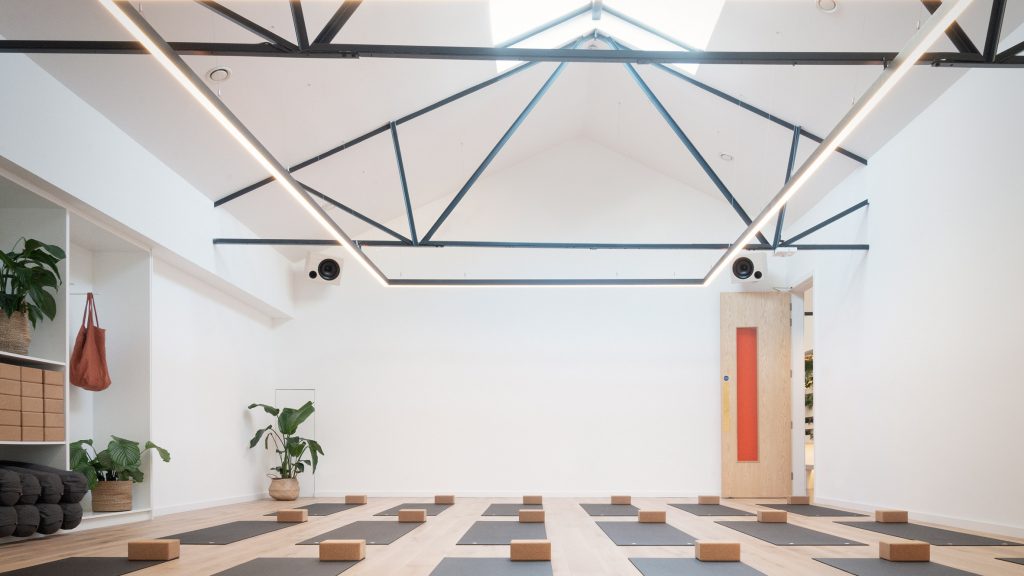
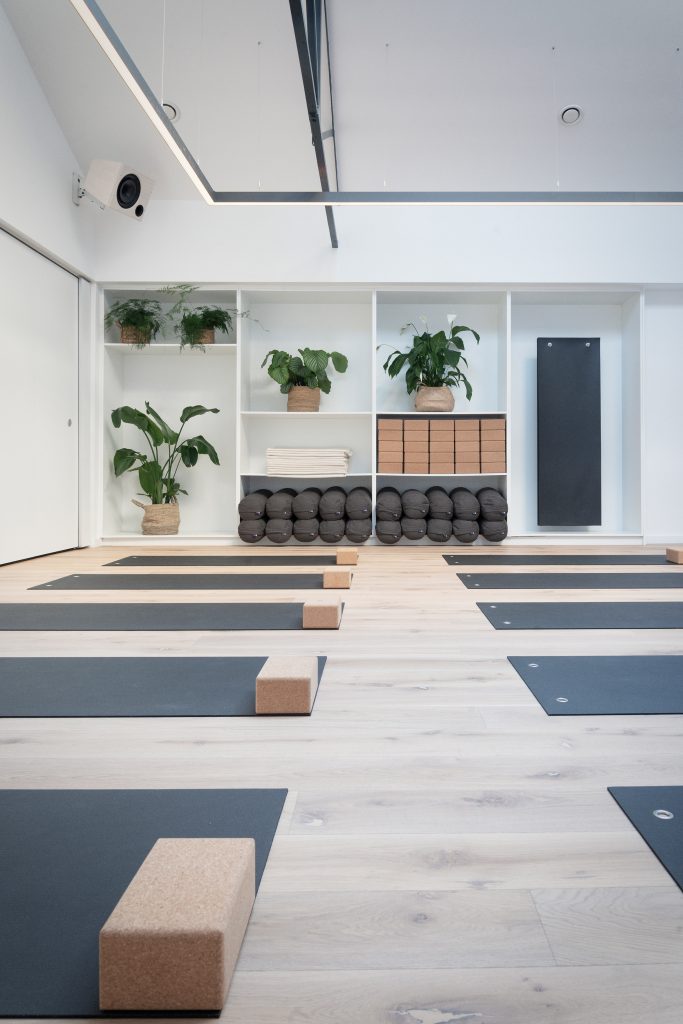
The Space Between yoga studio by Jordan Ralph Design
One of the two studios, named Now, is specifically dedicated to hot yoga and meditation sessions. In order to create a cosy, cocoon-like ambience for the practice, the team has used anthracite-coated finishes and black wooden floors. The contrasting second studio, titled Here, has been completed with calming pale oak floorboards and white walls, inbuilt with gridded shelves that display potted plants and store yoga equipment, with huge skylights punctuating in the gabled ceiling to keep the space filled with natural light.
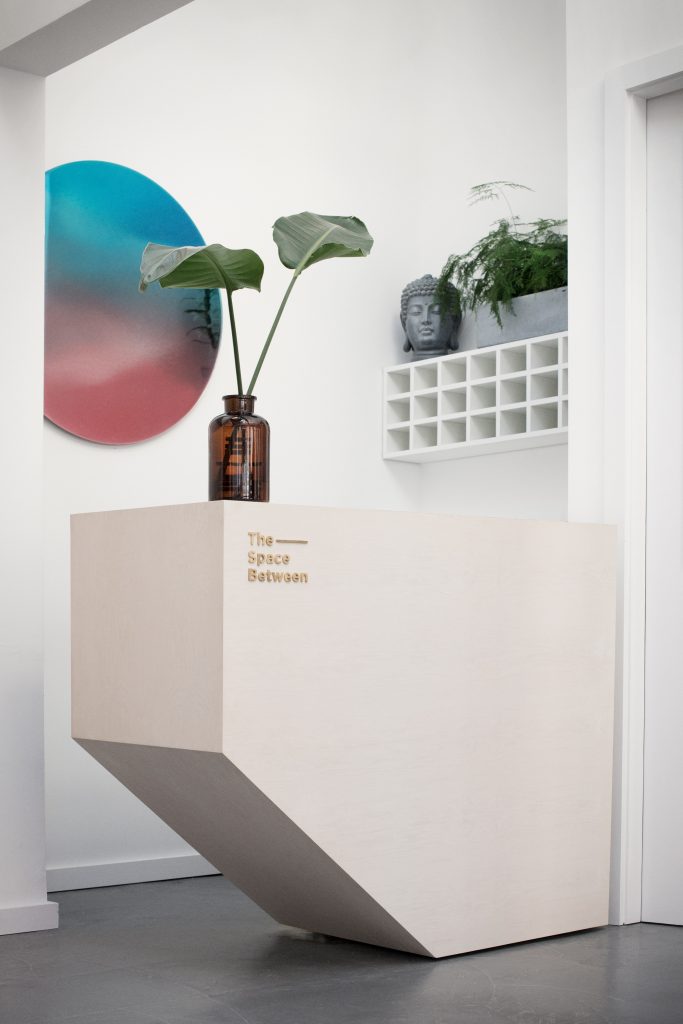
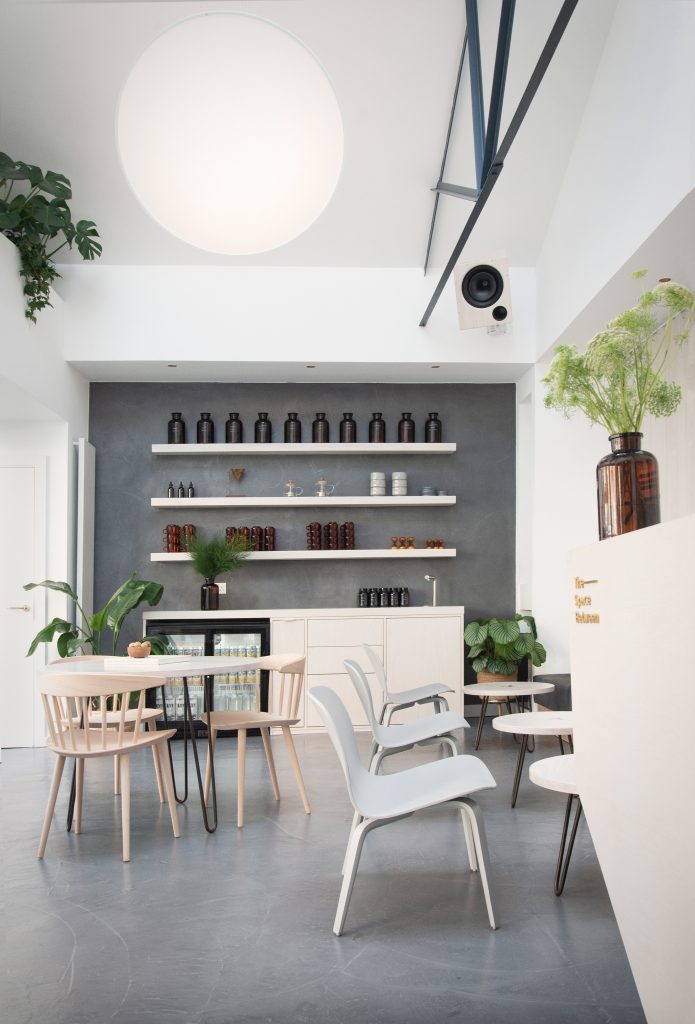
The Space Between yoga studio by Jordan Ralph Design
Representing a portal into The Space Between, a circular ombre mirror by Dutch artist Tjimke De Boer, which fades from blue to deep pink, is what visitors see as they enter the reception area. The teashop is located next to it connected with it by concertina doors. The space of the teashop features cloudy grey walls and slate-coloured bench seating.
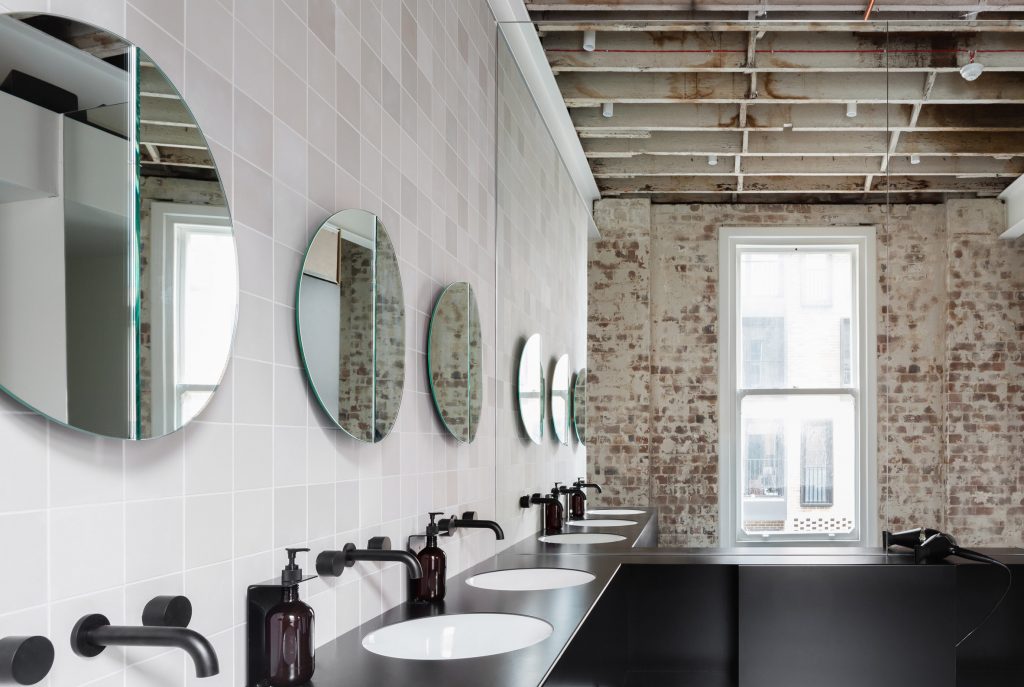
The Space Between yoga studio by Jordan Ralph Design
Changing facilities are accessed via a corridor that’s inbuilt with a 24-metre-long bench, a feature that the studio likens to a “backbone” of the studio.
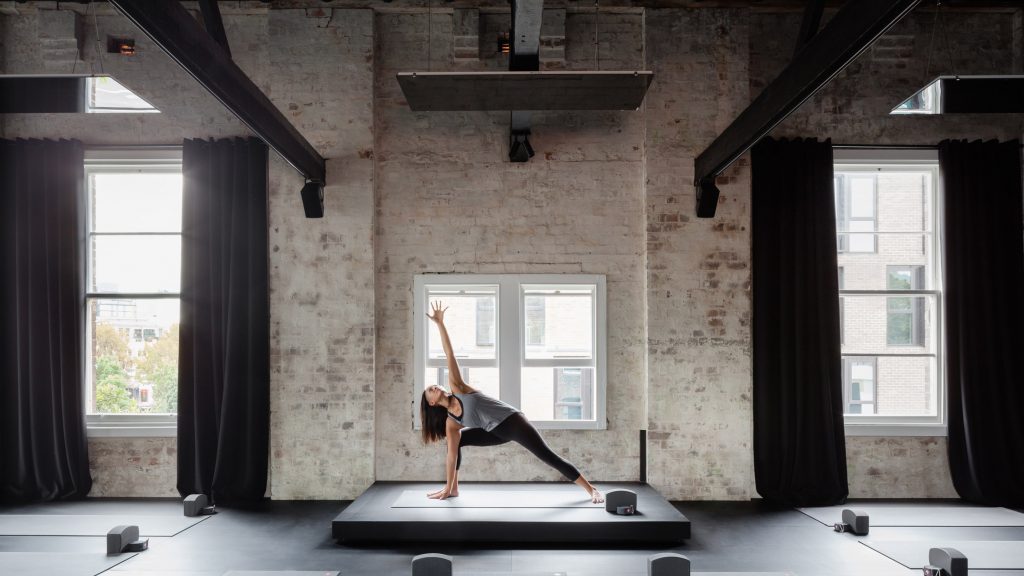
Humming Puppy Yoga Studio by Karen Abernethy Architects
Melbourne-based architect Karen Abernethy has designed a yoga studio in Sydney, Australia. Named The Humming Puppy, it is split across the two floors of an industrial building. Aiming to offer visitors a different sensory experience, the designer has developed a series of distinct spaces that together create an immersive effect from the moment when one walks in the front door. The first thing one sees is a deliberately neutral stairwell that lets them slow down and separate from the street outside before they enter the main space.
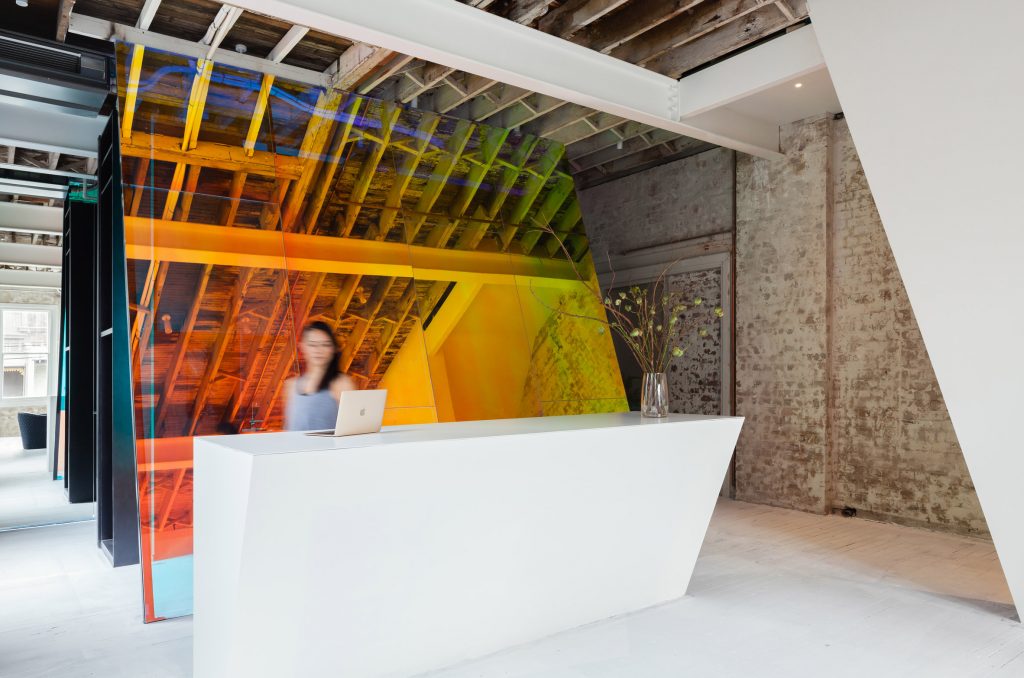
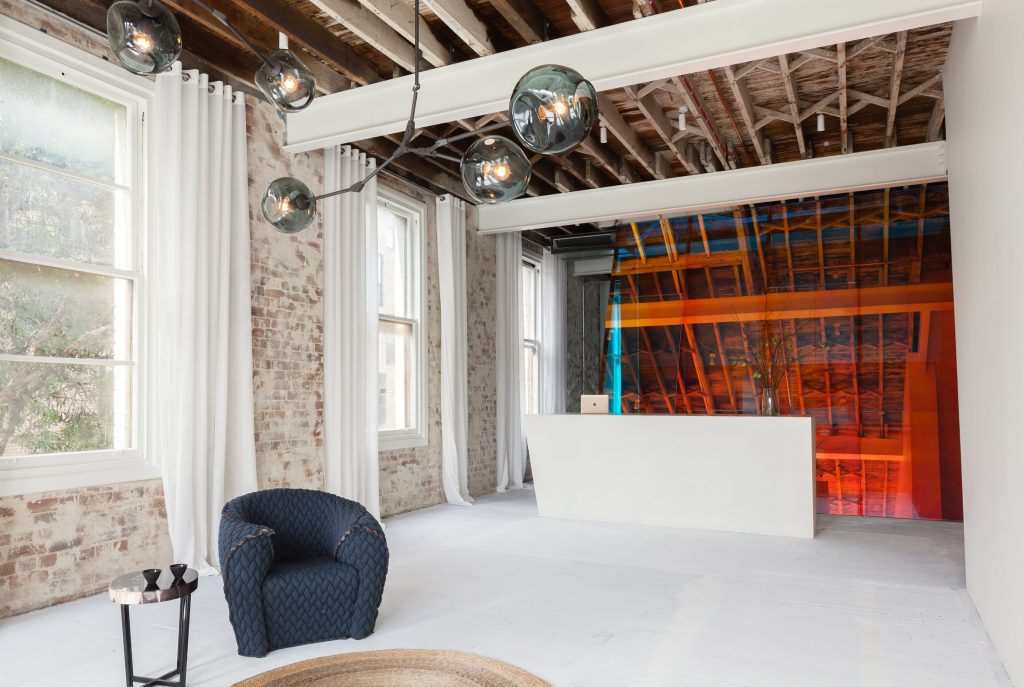
Humming Puppy Yoga Studio by Karen Abernethy Architects
The latter includes two zones – a changing room with lockers and a lounge area – separated by an angled screen with a dichroic filter. This makes the screen shimmer and change coloures as the visitor moves around it.
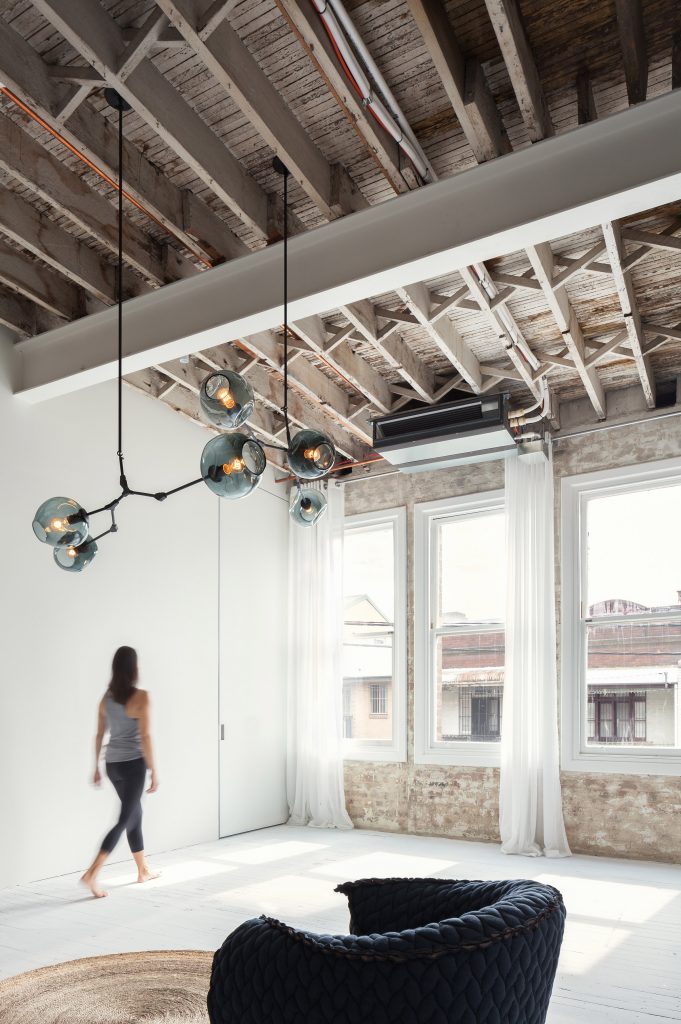
Humming Puppy Yoga Studio by Karen Abernethy Architects
Yoga classes take place in the Shala area at the back of the lounge area. As the studio is known for the humming yoga practice, the team finished the space in black plywood floors and black ceiling panels intended to absorb both light and sound to enhance the effect from the practice.
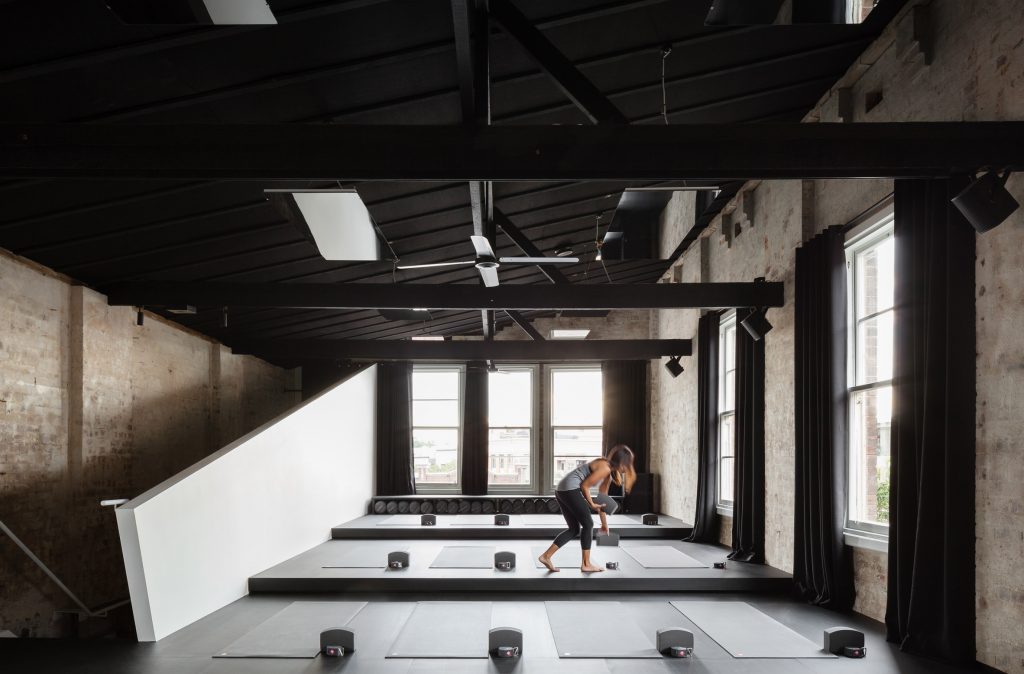
Humming Puppy Yoga Studio by Karen Abernethy Architects
Despite the bold interventions throughout the building, the architect was keen for the original architecture to maintain a strong presence, creating a project where the beautiful existing building shell could become the protagonist. The materials and fittings have been selected to reflect the existing building where possible.
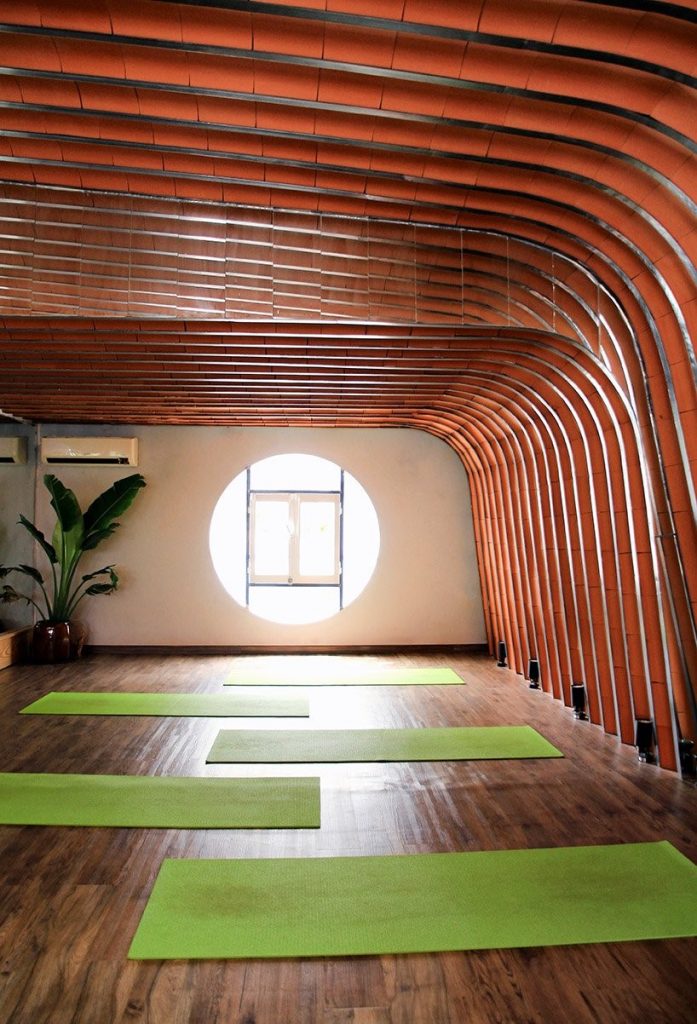
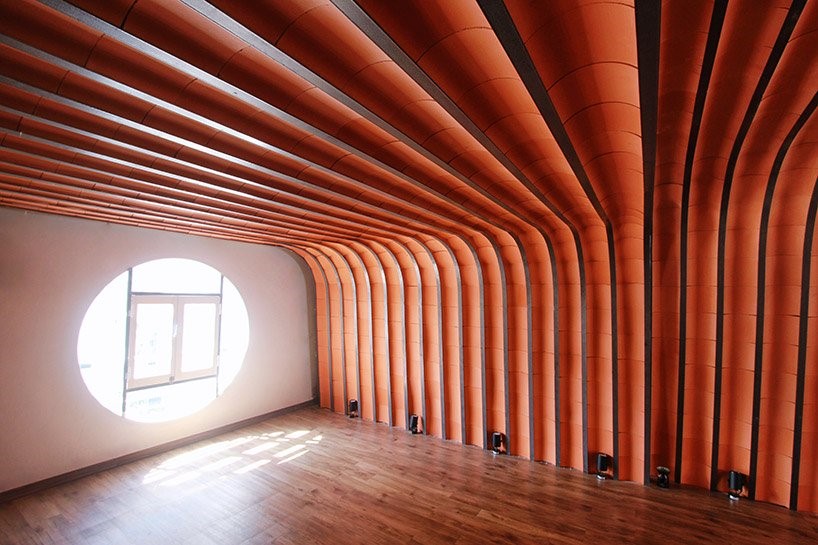
Yoga studio by 69.a StudiO (via designboom)
Local architecture firm 69.a StudiO has designed a yoga studio in Ho Chi Minh city as a terracotta-clad attic with smooth, curved forms of yin-yang tiles, a readily available resource commonly used in traditional Vietnamese architecture. This local material has numerous advantages, such as sound insulation, warm colors, rustic style, lightweight profile, besides it is always available at an affordable price.
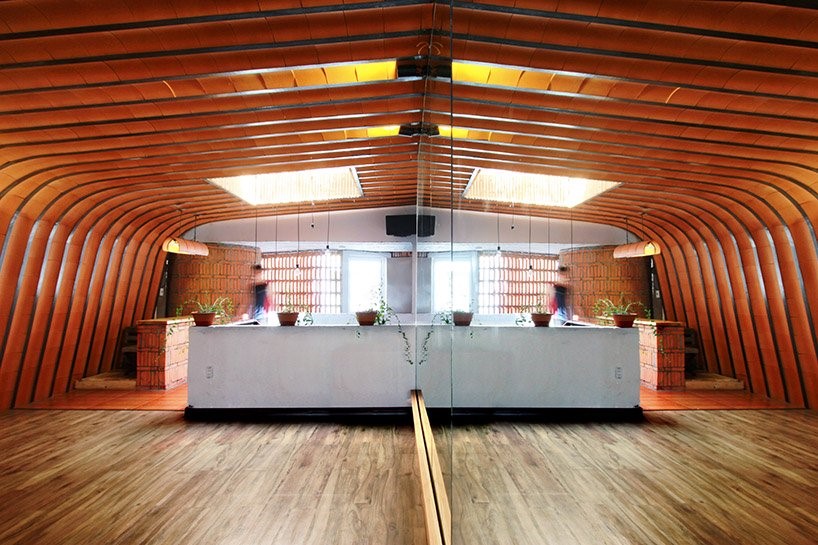
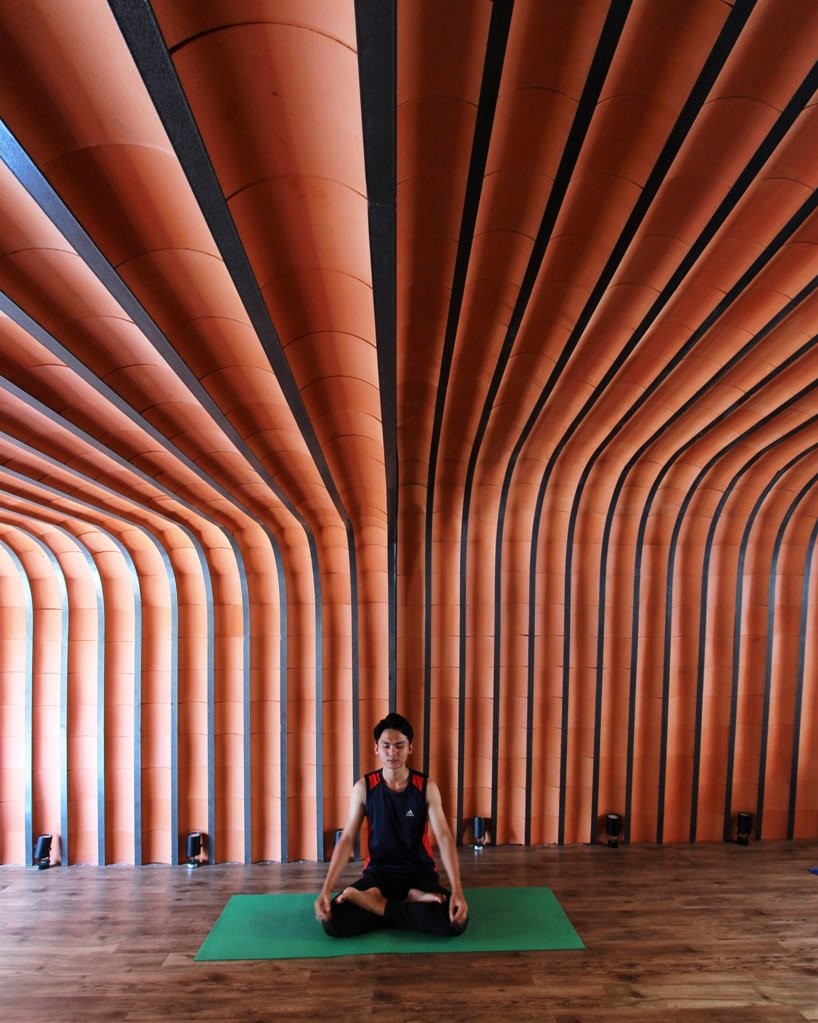
Yoga studio by 69.a StudiO (via designboom)
The compact studio located on the top floor of a four-storey townhouse provides room for up to eight people. To establish a greater sense of space, a mirror wall is placed to reflect the terracotta tiles. The choice of materials help create a familiar traditional feeling, simultaneously expressing the spirit of the brand.
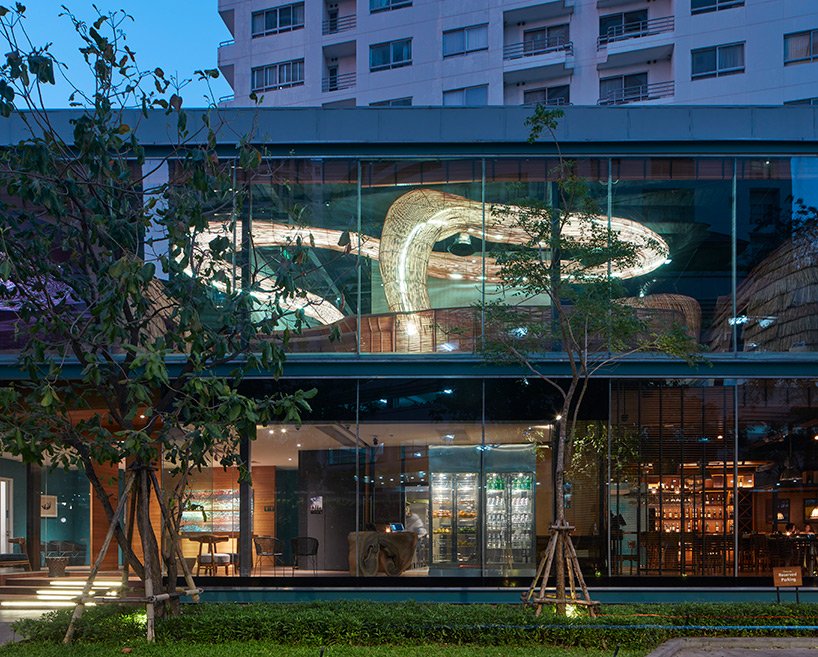
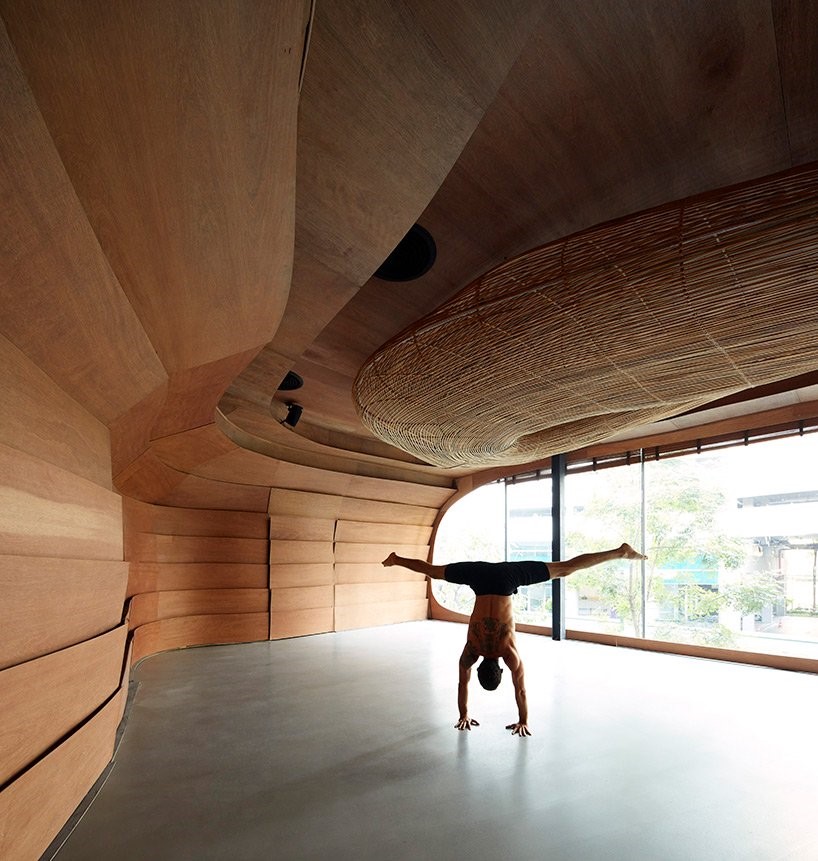
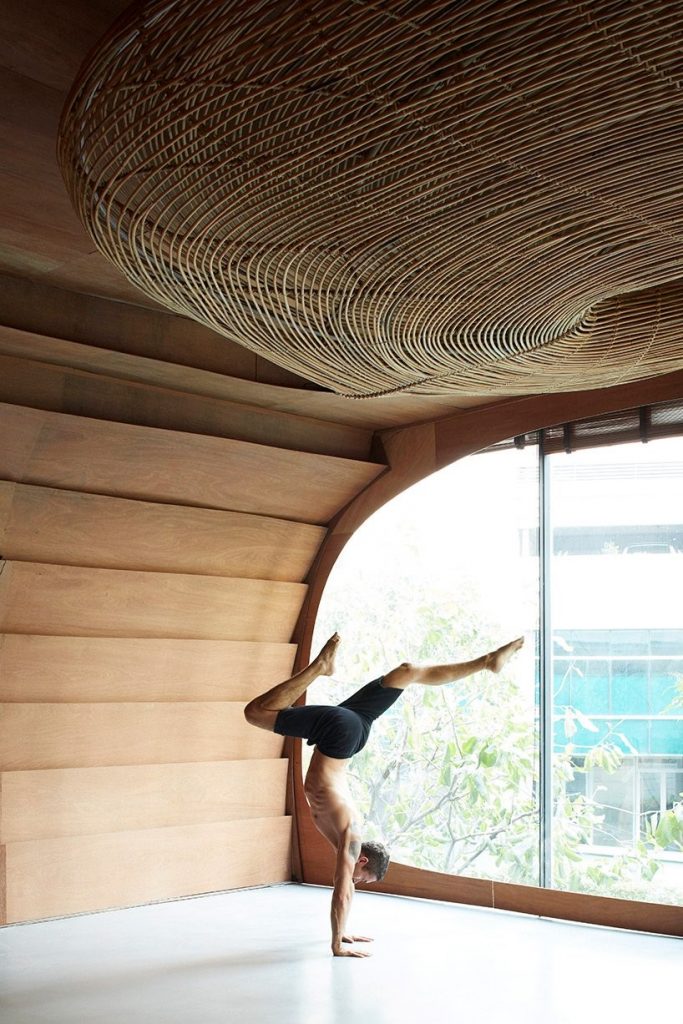
The Headquarters of yoga brand Vikasa by Enter Projects (also header image; ph: Edmund Sumner)
Unlike the tiny studio in Vietnam, the spacious headquarters of a Bangkok-based yoga brand Vikasa encompasses 450 square meters. Designed by the Thailand-based design firm Enter Projects, it includes a series of free-form yoga pods as well as a lobby and restroom facilities.
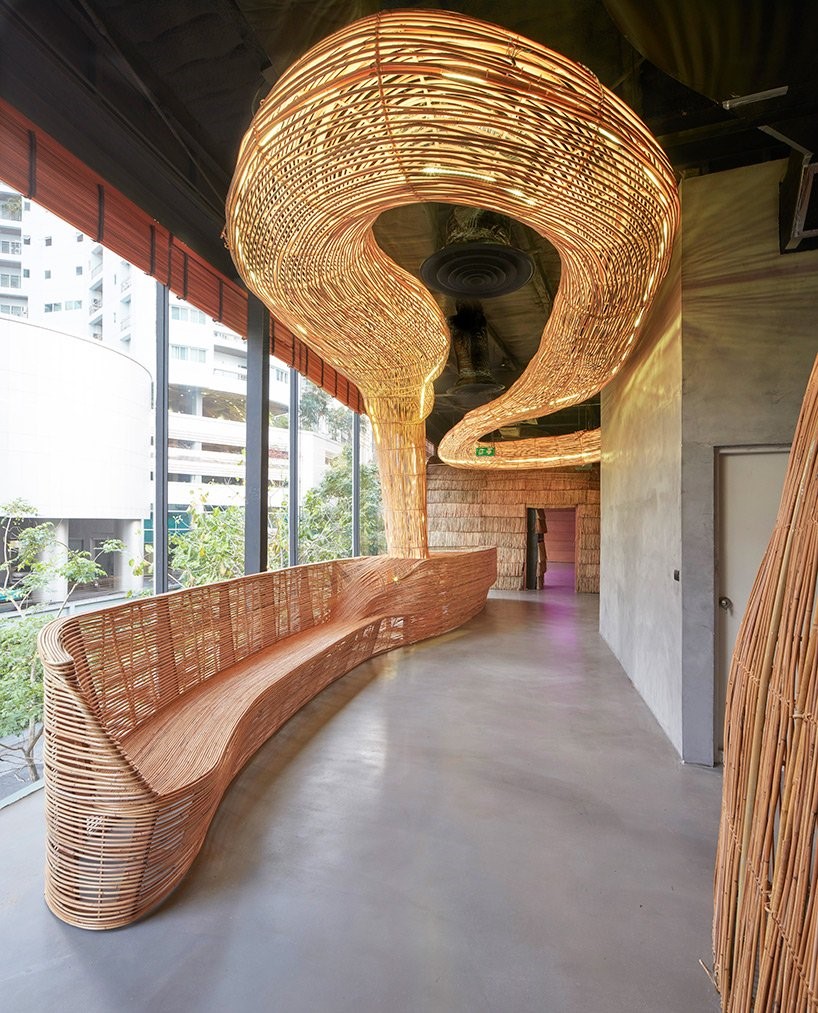
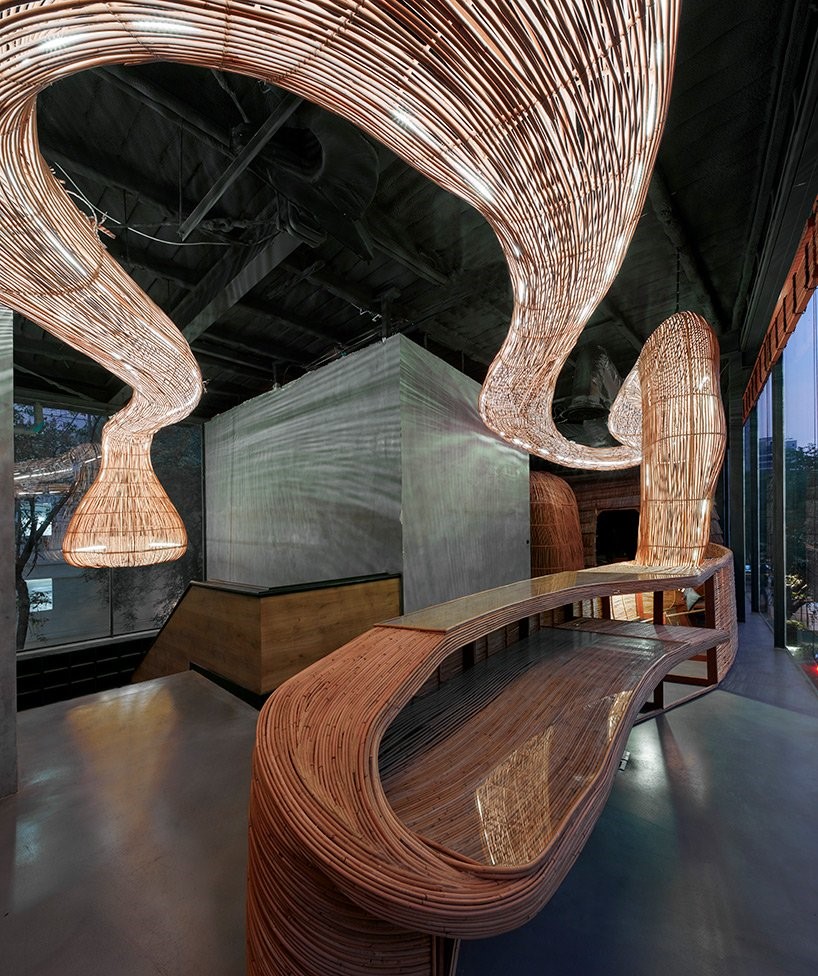
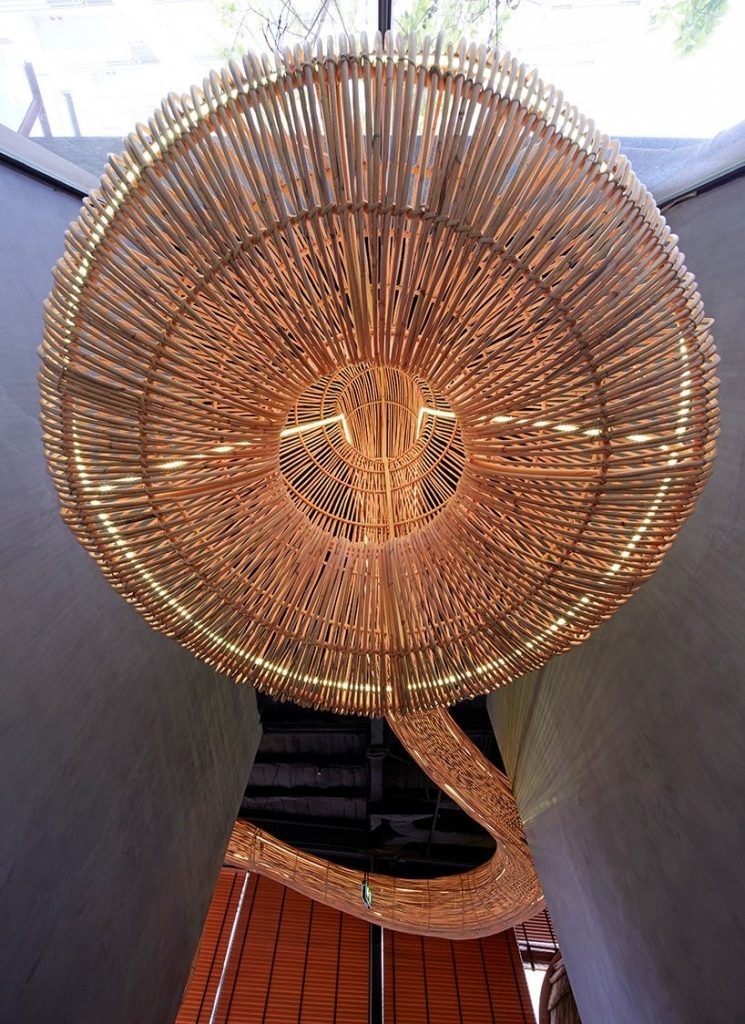
The Headquarters of yoga brand Vikasa by Enter Projects (ph: Edmund Sumner)
To create the pods with their signature geometry, the team has combined 3D technology with local craft using natural materials including rattan and palm leaves. Enter Projects have been working with rattan for some time supporting local people and giving them a chance to showcase their unique craftsmanship with the use of an entirely renewable material. Floor-to-ceiling windows on the front façade fill the space with natural light, while ensuring that the yoga pods remain private.
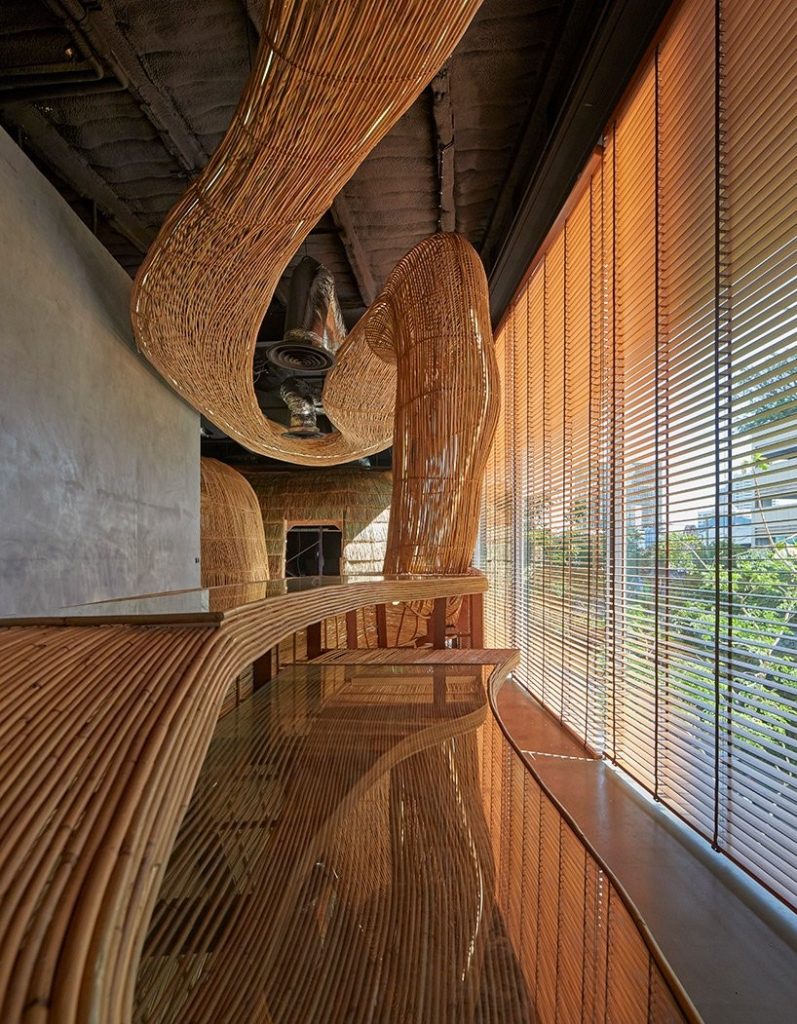
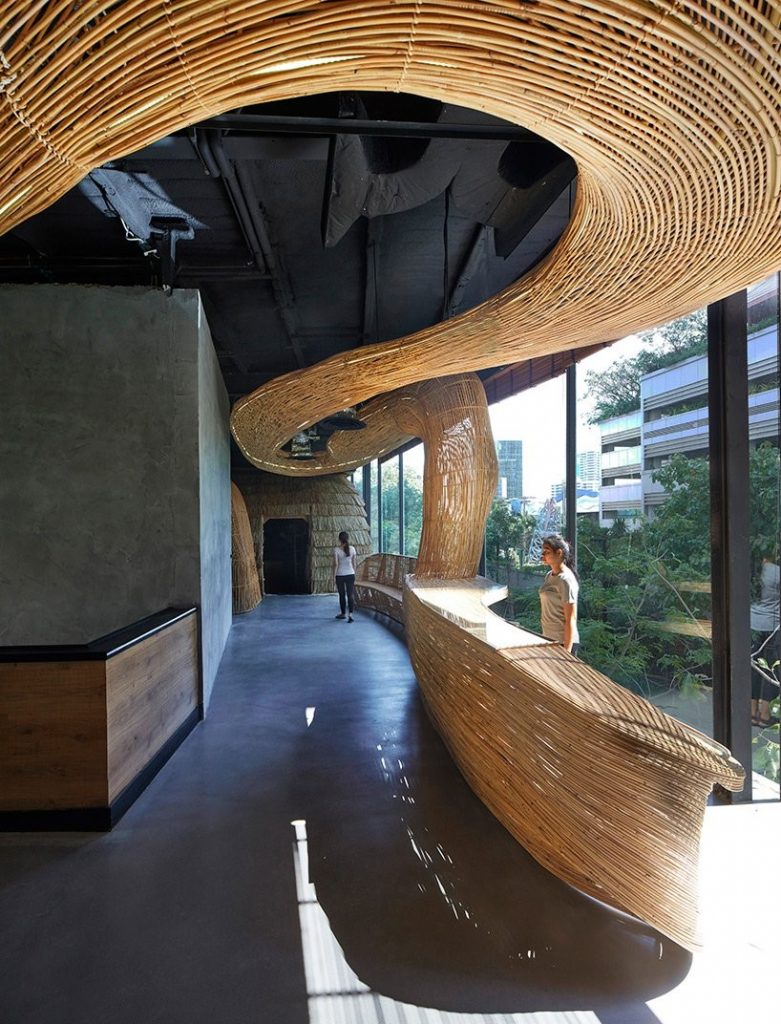
The Headquarters of yoga brand Vikasa by Enter Projects (ph: Edmund Sumner)
The concept feels like an oasis of tranquility amongst the chaos of Bangkok and serves as a manifestation of the company’s principles regarding health and wellness.
Discover more meditation spots here